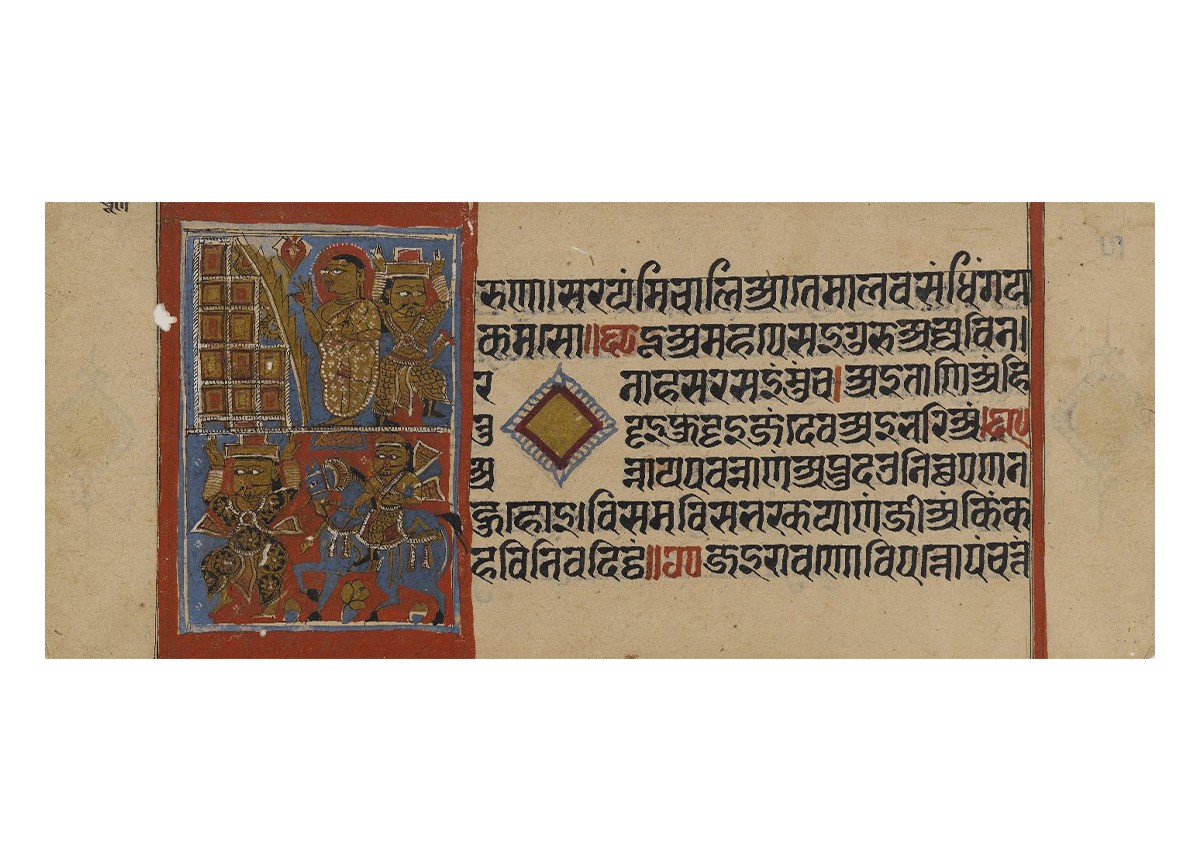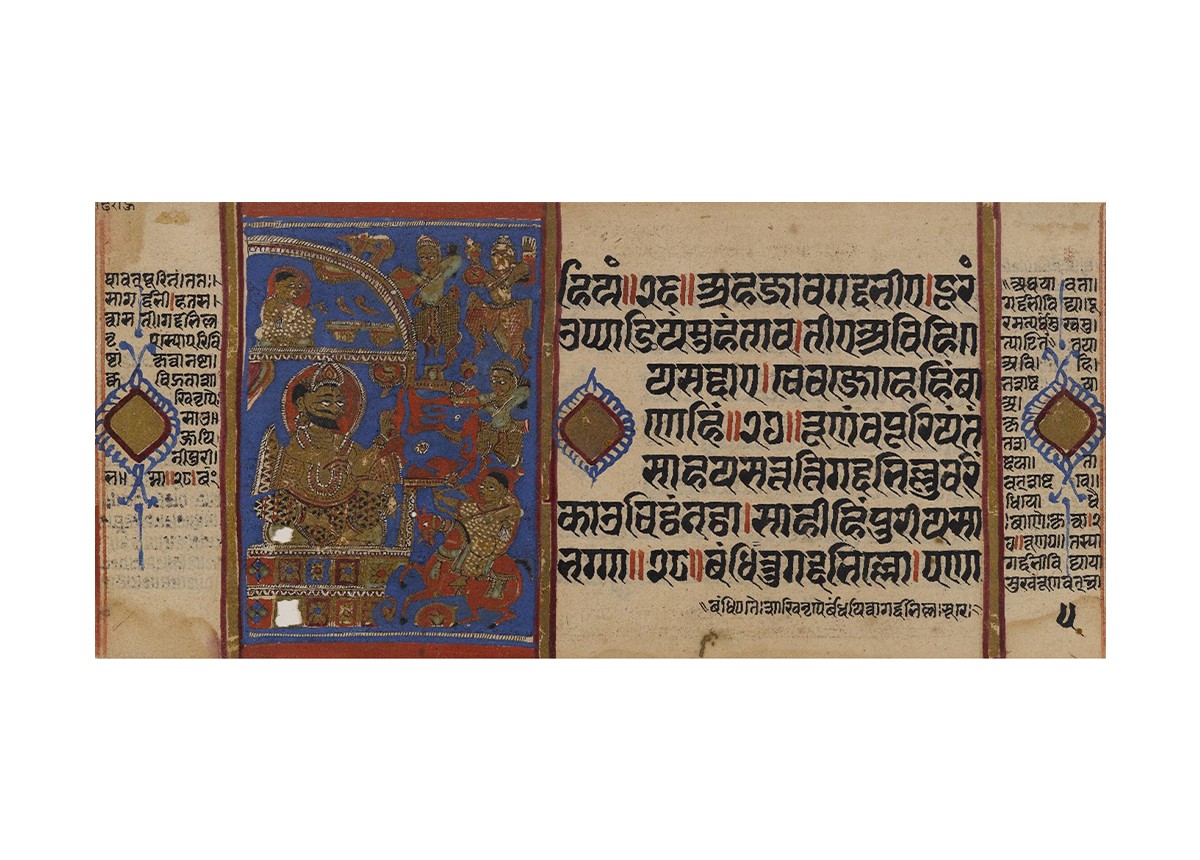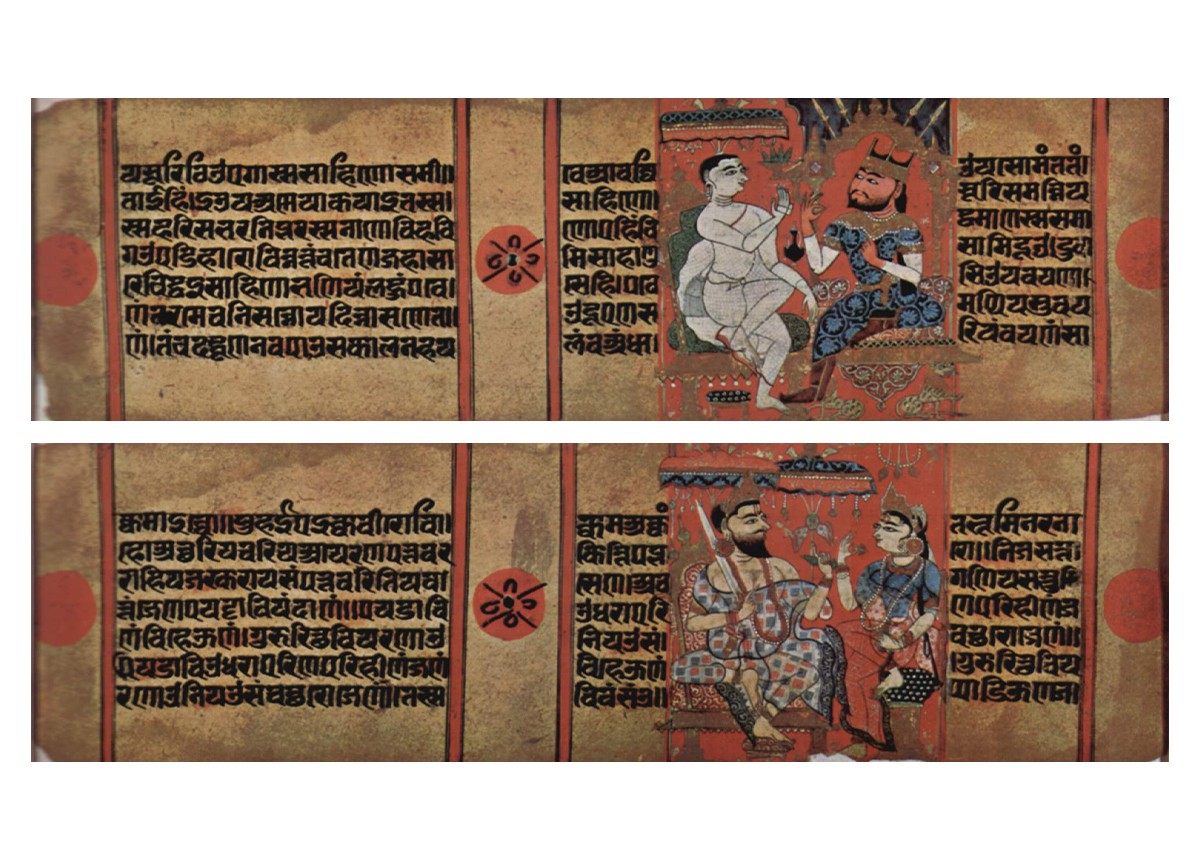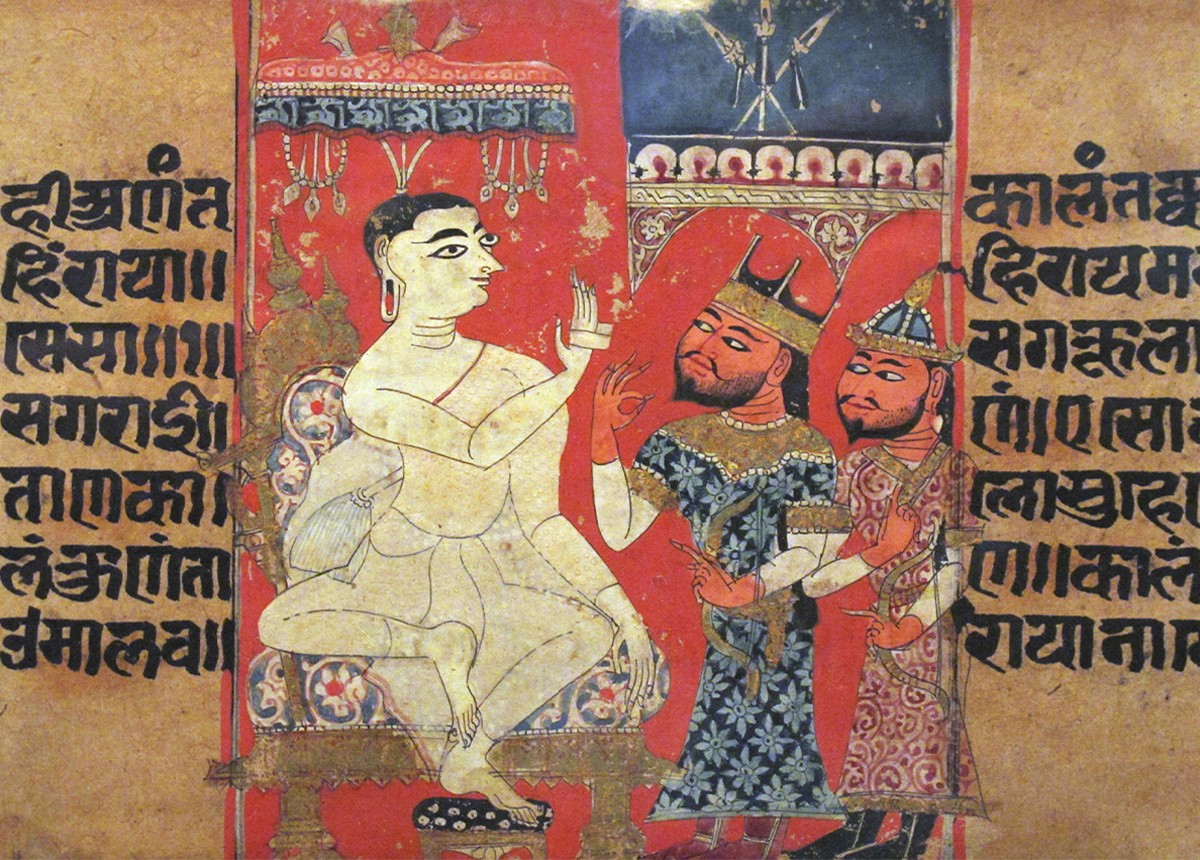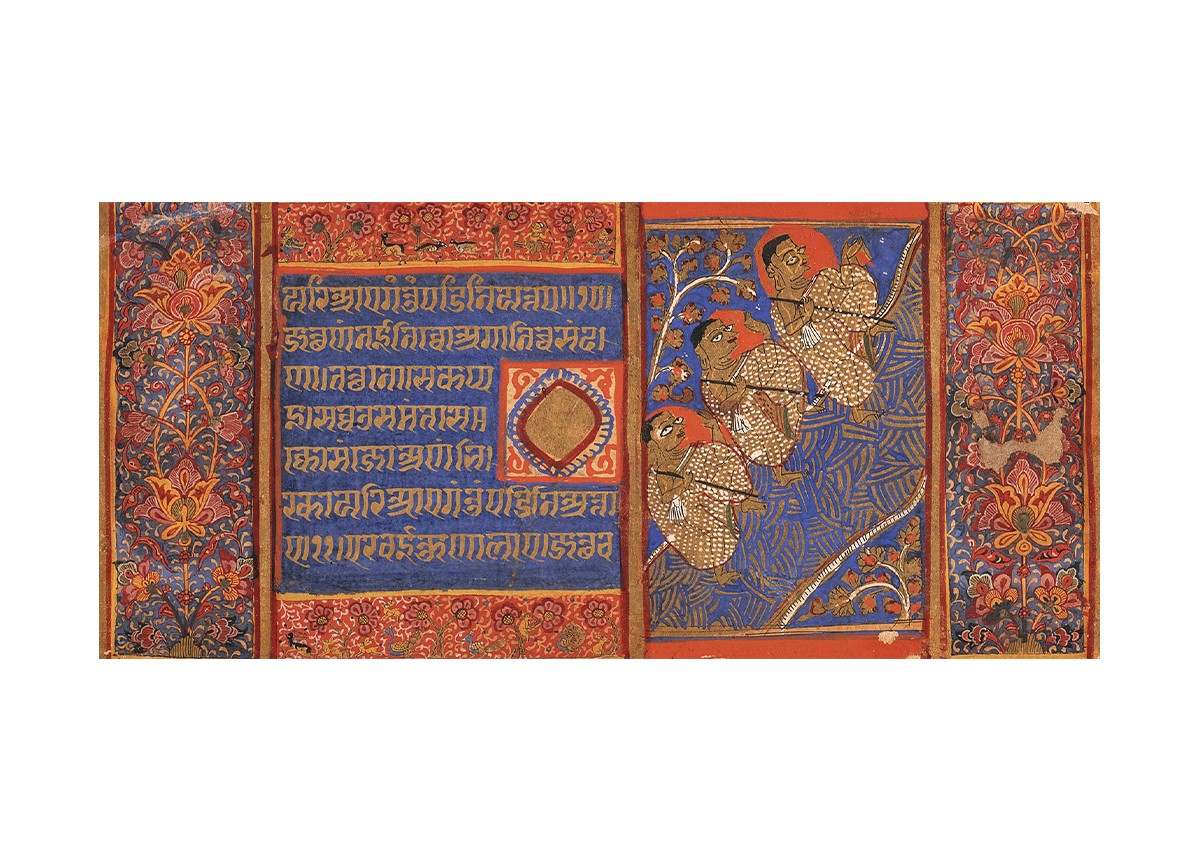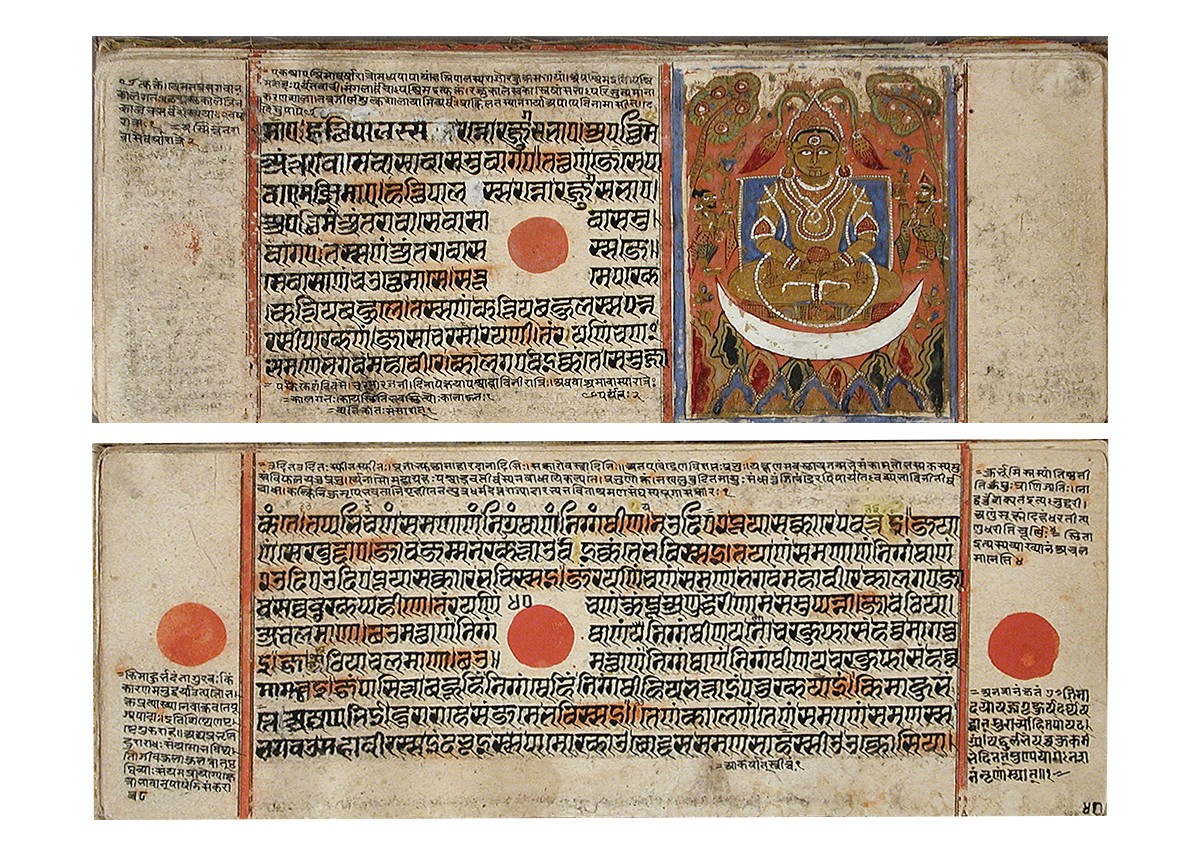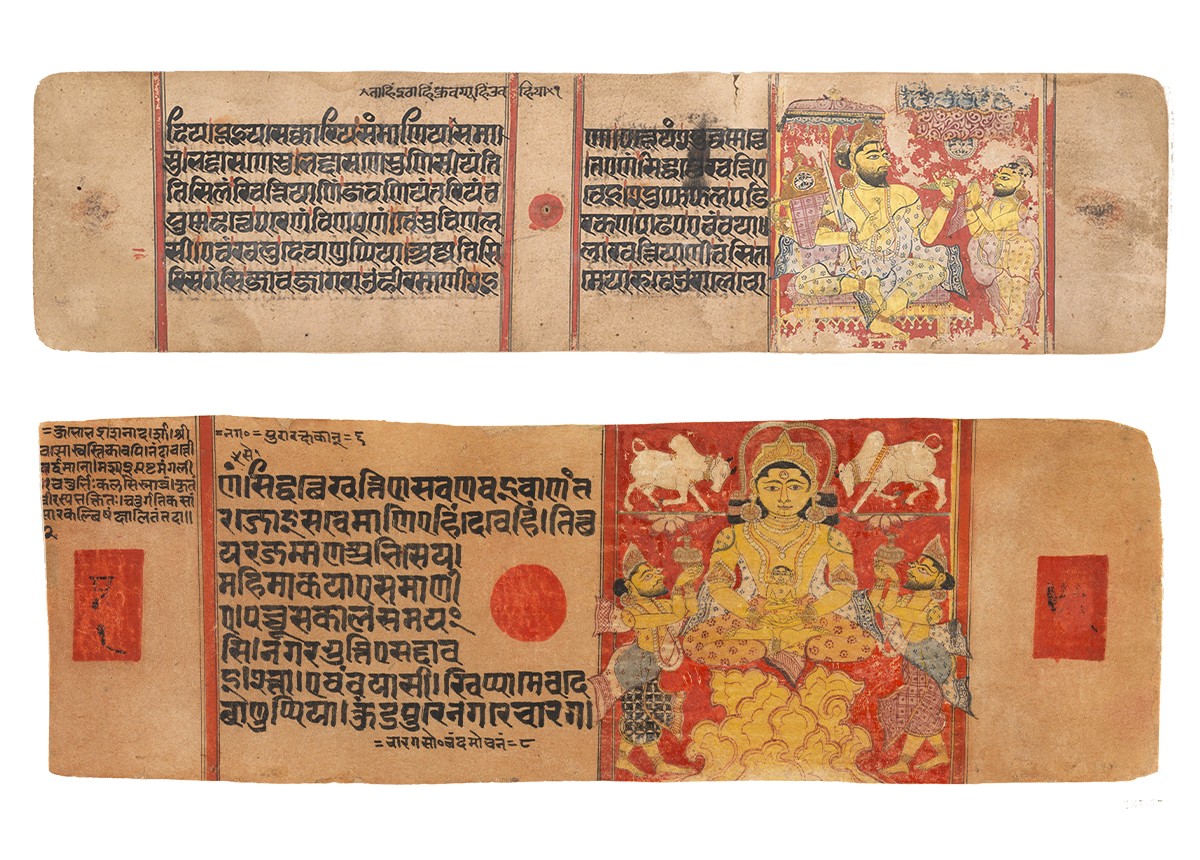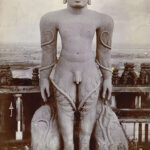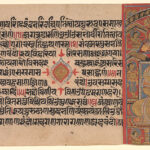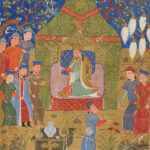Jain Manuscripts Are Illustrated on Paper
1366
A copy of the Kalakacharya Katha — today the oldest dated illustrated South Asian manuscript on paper — is produced in Yoginipur (present-day Delhi). By this time, Jainism has a centuries-old tradition of commissioning manuscripts of religious texts as an act of piety, carried out by both royal patrons such as the Solanki kings of present-day Gujarat, as well as lay patrons, chiefly merchants and bankers active in international trade networks of the time. The earlier palm-leaf manuscripts are stored in bhandaras or temple libraries, with the regions of present-day Gujarat and Rajasthan being the prime centres of patronage and production.
With the establishment of the Delhi Sultanate, Jain merchant communities also set up their presence in the region due to the city’s new trade networks; the Delhi region soon emerges as an important centre of Jain painting, alongside Gujarat and Rajasthan. Although the use of paper is not unknown at the time, this copy of the Kalakacharya Katharepresents a widespread transition towards paper for Jain and Hindu manuscripts. Gradually, the format of the manuscripts, the visual style and the tools and materials evolve to reflect the influences of Islamic book production on existing Indian traditions.
Bibliography
Dehejia, Vidya. Indian Art. New York: Phaidon Press, 1997.
Guy, John, and Jorrit Britschgi. Wonder of the Age: Master Painters of India, 1100-1900. New York: Metropolitan Museum of Art, 2011.
Kossak, Steven M. Indian Court Painting, 16th-19th Century. New York: Metropolitan Museum Of Art, 1997.
Losty, Jeremiah P. The Art of the Book in India. London: British Library, 1982.
Feedback 
This entry appears in
Art in South Asia
Visit Timeline
Associated Timeline Events
First Published: March 11, 2024
Last Updated: May 21, 2024



